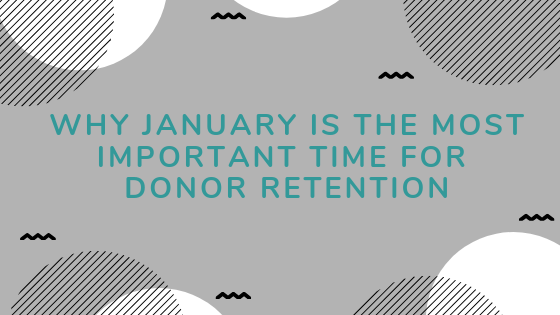Nonprofits usually have a good run in the holidays. Actually, about 25% of the total donation volume for the year is from Giving Tuesday to the end of year. Also, this period comes with several new donors. Organizations receive between 70-75% of one-time donations from completely new donors. Your audience becomes strengthened as a consequence of the new donors, and then your community rises rapidly – all at once.
While it is very easy to lay back and congratulate yourself on your recent achievements, it is imperative to take measures that would help you continue to engage the newcomers. This plays a huge role in the amount of success that you’d record in the next year. January is the best time to reach out to your donors, reinforce old relationships, and foster fresh ones.
Donor Retention Matters
Remember every first-time donor that you got in the previous year, particularly those that you gained through your end-of-year campaign. Statistics from the current donor attrition trends shows that 81% of new donors won’t give again. You may have put in a lot to gain the interest of supporters, with hopes for a possible conversion, but all these can easily vanish. And you’re left to start the entire process again from scratch.
However, you don’t have to go down that path.
If you start taking the right steps, you’d be able to retain a good number of your donors, whether new or old, and expand their long-term financial returns. All you need to do is apply follow up steps that would retain your supporters, then you can strive to strengthen the aspect of fundraising in the course of next year.
Donor Retention Tips:
Thank Them
This is the same for every other fundraising campaign. Be sure to extend your profound gratitude to your donors, both supporters of your Giving Tuesday and year-end campaigns. Then, campaign results and impact should come right after that. However, in January, you shouldn’t only follow up with December donors, you should also reach out to ALL your donors from the previous year.
Think of someone who donated six months ago, extending your heartfelt gratitude in the beginning of the New Year is important. This does not only show them how grateful you are for their support, but also tells them that you would like them to stay involved. You should certainly be grateful to your recent donors. But at this time, you want to reach out to every single donor and thank them for their support, reminding them that you’re immensely grateful, regardless of when or how much they gave.
Send Them Great Content
Impact stories are amongst the most effective ways to follow up and motivate past donors to keep supporting. These stories are very vital, and should be communicated with your donors every now and then. This displays the amazing effects of their gifts. Also, January is the time when annual reports of organizations are given to supporters. You can capture this opportunity, engage your donors, and cause them to keep supporting. Ensure that you include graphics, captivating stories, and your intentions for the coming year.
Another way to keep your donors engaged is by including them in your welcome email series, and eventually in a cultivation funnel that receives frequent messages. Take a look at our free donor retention email templates which you can use to build up touch points easily.
Promote Monthly Giving
A simple way to get recurrent donors is by getting them to commit to a monthly donation. For instance, a donor that gives $25 as their first donation, can commit to donating $5 per month. In one year, their donation would have exceeded two times the original sum.
According to Classy’s analysis, an average recurring donation is $37 and the median is $25. And through survival analysis, we ascertained that about 75% of returning donors stay committed for six months at minimum, while some keep giving for many years.
Get your supporters to make giving a part of their New Year’s resolutions. Encourage monthly donations as a means of showing continued support and make next year a year to give back.
Bonus: A lot of people get a raise on their salary in January. And because they earn more, they may be inspired to increase their donation.
Reengage with Upcoming Initiatives
As you promote monthly giving, keep both new and old donors aware of future plans. Of course, you don’t want to send in another appeal right after you say “thank you,” so do well to inform them about an upcoming event or milestone.
You could send out a save-the-date email for your upcoming run/walk in April, or your 10th anniversary celebration. The aim is to lay a foundation which you can build up on later.
This helps your organization maintain a good position in the mind of your donors, and gives an impression of constant growth, and not constant appeals.
Another great idea is letting your donors in on peer-to-peer fundraising options. They probably have an upcoming birthday, or have interest in running a marathon for charity this summer. Site an instance with a fundraising page to show them how to go about it.
You’ve invested a lot of time and resources in gaining new donors, and it’d be very disheartening to watch all of them drift away in the New Year. Though there’s usually very little activity in January concerning fundraising, you can use this time to reinforce past relationships, and foster new ones that would carry on for years. At the moment, this may look like additional work, but following up and engaging your donors as the year begins will help you acquire more donors, thus expanding your community for your upcoming campaign.


Recent Comments